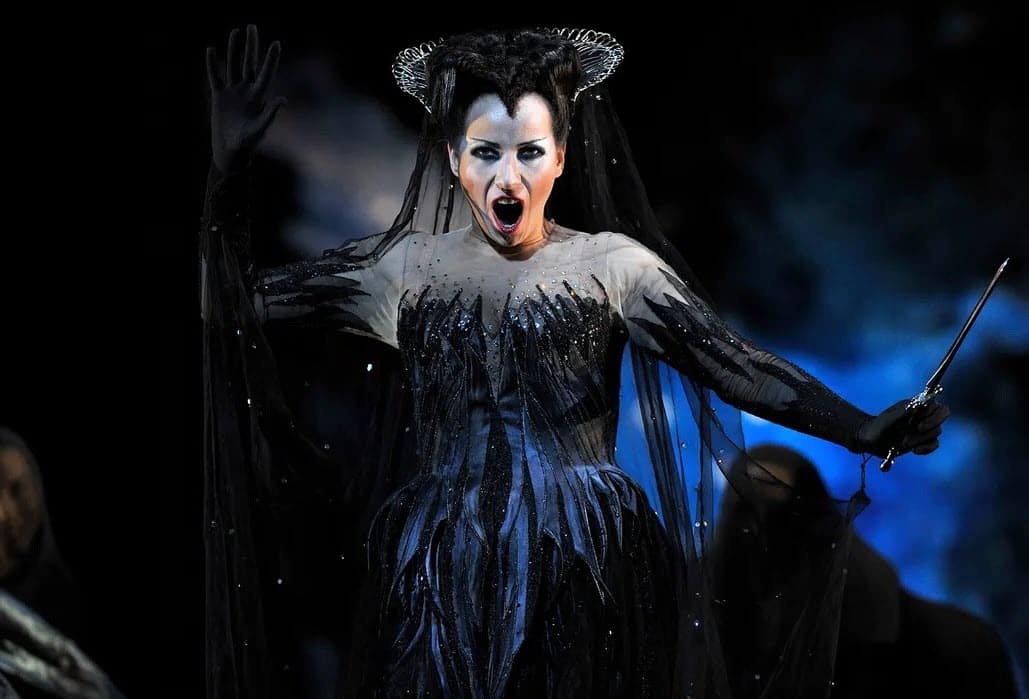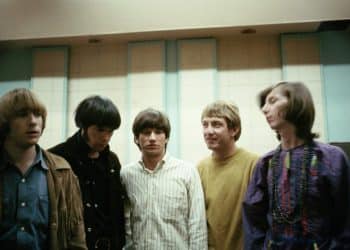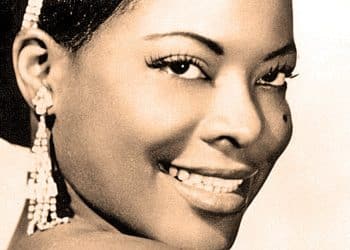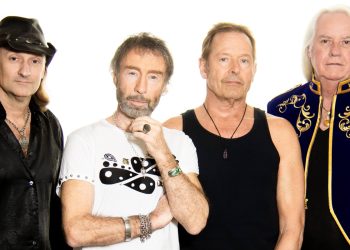Opera is the ultimate fusion of music, drama, and passion, where soaring voices and breathtaking orchestration come together to create some of the most emotionally powerful moments in musical history. For centuries, opera has captivated audiences with heart-wrenching arias, electrifying duets, and grand choruses that tell stories of love, betrayal, triumph, and tragedy. Whether performed in a grand opera house or echoing through the silver screen, these timeless masterpieces continue to move the soul and stir the imagination.
But what makes an opera song truly unforgettable? Is it a tenor’s voice reaching impossible heights? A soprano’s delicate yet commanding presence? Or the sheer emotional weight carried in each note? The greatest opera songs have the power to bring tears, send shivers down your spine, and make your heart race—all within just a few minutes.
In this list, we’re counting down the 15 most popular opera songs of all time—the arias and ensembles that have defined the genre and continue to enchant audiences worldwide. From the haunting beauty of Puccini to the dramatic brilliance of Verdi and Mozart, these pieces will transport you to a world of pure musical magic. 🎭🎶✨
1. “La donna è mobile” (1851) – Rigoletto by Giuseppe Verdi
Playful, ironic, and irresistibly catchy, “La donna è mobile” is one of opera’s most celebrated melodies. From Verdi’s Rigoletto, this aria is sung by the charming yet unfaithful Duke of Mantua, who cynically mocks women’s supposed fickleness while embodying those very traits himself. First performed in 1851, the aria became an instant sensation, with its upbeat tempo and memorable tune captivating audiences. Verdi, aware of its immense appeal, went to great lengths to ensure it remained a secret during rehearsals, fearing it would leak before the premiere. The Duke’s lighthearted delivery juxtaposes the opera’s darker themes, making “La donna è mobile” an enduring favorite in the operatic canon.
2. “Habanera” (1875) – Carmen by Georges Bizet
Sultry, seductive, and bursting with energy, “Habanera” is the perfect introduction to the fiery and free-spirited Carmen in Bizet’s Carmen. Premiering in 1875, this iconic aria weaves sensuality and defiance as Carmen boldly proclaims that love is a rebellious bird that cannot be tamed. With its hypnotic rhythm and alluring melody, the “Habanera” captures Carmen’s essence: a woman who is unapologetically independent and irresistibly captivating. Its dance-like structure and flirtatious undertones make it one of opera’s most instantly recognizable and enduring pieces, leaving audiences spellbound by its magnetic charm.
3. “Nessun Dorma” (1926) – Turandot by Giacomo Puccini
Widely regarded as one of the most iconic arias in the operatic repertoire, “Nessun Dorma” is a stirring and powerful masterpiece from Puccini’s Turandot. This aria, performed by the fearless Prince Calaf, captures a moment of intense anticipation and determination as he prepares to solve the riddles of the cold-hearted Princess Turandot to win her love. Premiering in 1926, the aria’s soaring melody and emotional depth make it unforgettable, culminating in the triumphant cry of “Vincerò!” (“I will win!”). This declaration of victory resonates as a universal anthem of hope and perseverance. Immortalized by Luciano Pavarotti’s legendary performances, “Nessun Dorma” transcends the opera stage, becoming a symbol of resilience and triumph that continues to inspire audiences around the world.
4. “Queen of the Night Aria” (1791) – The Magic Flute by Wolfgang Amadeus Mozart
Dramatic and technically dazzling, the “Queen of the Night Aria” is a fiery showpiece that never fails to thrill audiences. Sung by the vengeful Queen in Mozart’s The Magic Flute, this aria premiered in 1791 and remains one of the most challenging works for sopranos. The Queen, filled with rage, commands her daughter Pamina to kill the sorcerer Sarastro, unleashing a torrent of emotions through rapid, intricate coloratura passages and high F notes. The aria’s intensity and vocal demands make it a standout moment in the opera, requiring exceptional skill and dramatic flair. It’s a breathtaking highlight that showcases Mozart’s genius and the soprano’s artistry.
5. “Una furtiva lagrima” (1832) – L’elisir d’amore by Gaetano Donizetti
Romantic and tender, “Una furtiva lagrima” is a heartfelt gem from Donizetti’s L’elisir d’amore. Premiering in 1832, this aria captures the vulnerable joy of Nemorino, who believes he has seen proof of Adina’s love in a single tear. The gentle, lyrical melody and deeply emotional delivery make it one of the most cherished tenor arias in opera. It’s a moment of quiet reflection and overwhelming hope, embodying the sweetness and sincerity of unspoken love. The aria’s universal appeal and emotional depth ensure its place as a favorite for singers and listeners alike.
6. “Largo al factotum” (1816) – The Barber of Seville by Gioachino Rossini
Dynamic, witty, and bursting with energy, “Largo al factotum” is one of the most electrifying arias in the operatic repertoire. Sung by Figaro, the lively and resourceful barber, in Rossini’s The Barber of Seville, this aria premiered in 1816 and has since become a show-stopping favorite. With its rapid-fire lyrics and charismatic delivery, the aria is a celebration of Figaro’s central role in the bustling town, showcasing his quick wit and larger-than-life personality. The infectious melody and tongue-twisting phrasing demand exceptional vocal agility, making it a favorite for baritones eager to showcase their skill and charm. For audiences, it’s a whirlwind of humor and vitality, perfectly capturing Figaro’s vibrant spirit.
7. “O Mio Babbino Caro” (1918) – Gianni Schicchi by Giacomo Puccini
Gentle, heartfelt, and utterly moving, “O Mio Babbino Caro” is one of Puccini’s most beloved arias. Sung by the young Lauretta in Gianni Schicchi, it premiered in 1918 and remains a timeless piece that tugs at the heartstrings. In this poignant moment, Lauretta pleads with her father to allow her to marry Rinuccio, expressing her love with a melody that is as delicate as it is powerful. The aria’s simplicity and emotional sincerity have made it a favorite both within and beyond the opera stage, frequently performed in concerts and featured in films. Its enduring beauty continues to resonate with listeners, evoking themes of love, devotion, and longing.
8. “Di quella pira” (1853) – Il Trovatore by Giuseppe Verdi
Fiery and heroic, “Di quella pira” is one of the most electrifying moments in Verdi’s Il Trovatore. Premiering in 1853, the aria is sung by Manrico as he swears to rescue his mother from impending execution. This dramatic piece brims with raw determination and defiance, showcasing thrilling high notes that demand exceptional vocal power from the tenor. Often regarded as a test of endurance, “Di quella pira” is a showstopper that highlights the intensity and passion characteristic of Verdi’s works. It’s a moment of soaring emotion, embodying the spirit of operatic drama.
9. “Vesti la giubba” (1892) – Pagliacci by Ruggero Leoncavallo
Few arias capture raw human anguish like “Vesti la giubba” from Leoncavallo’s Pagliacci. Debuting in 1892, this heartbreaking aria portrays the tortured emotions of Canio, a clown forced to perform despite his wife’s betrayal. As Canio dons his costume, his despair culminates in the iconic line, “Laugh, clown, at your broken heart,” which resonates deeply with audiences. Its blend of vulnerability and rage is unforgettable, making “Vesti la giubba” one of opera’s most powerful and universally recognized pieces.
10. “Casta Diva” (1831) – Norma by Vincenzo Bellini
Exquisite and ethereal, “Casta Diva” is a shining example of bel canto beauty. Sung by the Druid priestess Norma in Bellini’s Norma, this aria premiered in 1831 and has become a signature piece for sopranos. With its floating melody and serene devotion to the moon goddess, “Casta Diva” creates a transcendent moment of stillness and grace, offering a glimpse into Norma’s spiritual depth and inner turmoil. The aria’s breathtaking beauty and technical demands make it a crowning jewel of operatic repertoire, revered for its elegance and emotional resonance.
11. “Flower Duet” (1883) – Lakmé by Léo Delibes
The “Flower Duet” from Léo Delibes’ opera Lakmé is a mesmerizing piece that has captivated audiences for over a century. First performed in 1883, this enchanting duet between Lakmé and her servant Mallika showcases lush harmonies and seamless interwoven melodies that evoke a serene, almost dreamlike setting. The duet paints a picture of idyllic tranquility, transporting listeners to a peaceful riverside. Its universal appeal and ethereal charm have made it a staple in popular culture, frequently featured in movies, TV shows, and advertisements. Whether experienced on stage or through modern media, the “Flower Duet” remains a timeless example of operatic beauty.
12. “Che gelida manina” (1896) – La Bohème by Giacomo Puccini
Romantic and tender, “Che gelida manina” is one of the highlights of Puccini’s La Bohème. Premiering in 1896, this aria is sung by Rodolfo as he introduces himself to Mimi, revealing his dreams, passions, and burgeoning love for her. The soaring melody and heartfelt lyrics capture the youthful spirit and emotional intensity of first love. It’s a moment of vulnerability and connection that continues to resonate deeply, making it a cornerstone of operatic romance.
13. “Ah! mes amis, quel jour de fête!” (1840) – La fille du régiment by Gaetano Donizetti
Bursting with energy and joy, “Ah! mes amis” is a dazzling showcase of vocal prowess from Donizetti’s La fille du régiment. First performed in 1840, the aria is sung by Tonio as he celebrates his engagement to Marie. With its famously challenging nine high Cs, this aria is a test of technical mastery and stamina for any tenor. Its exuberant melody and cheerful spirit make it a crowd favorite, earning its place as one of the most celebrated tenor arias in the operatic repertoire.
14. “E lucevan le stelle” (1900) – Tosca by Giacomo Puccini
“E lucevan le stelle” from Puccini’s Tosca is a hauntingly beautiful aria filled with longing and heartbreak. Premiering in 1900, it is sung by the condemned painter Cavaradossi as he awaits execution, reflecting on his love for Tosca and the fleeting beauty of life. The poignant melody captures the deep sorrow of impending death while expressing an enduring passion for love and art. This aria remains one of Puccini’s most cherished works, touching the hearts of opera lovers with its emotional depth and haunting beauty.
15. “Libiamo ne’ lieti calici” (1853) – La Traviata by Giuseppe Verdi
Joyful and infectious, “Libiamo ne’ lieti calici,” better known as the “Drinking Song,” is one of the most recognizable pieces from Verdi’s La Traviata. First performed in 1853, this jubilant toast to love and pleasure sets the tone for the opera’s unfolding drama. With its lively rhythm and celebratory spirit, the aria invites both characters and audiences into a world of indulgence and festivity. Often performed at opera galas and events, this piece embodies the lighter, more playful side of Verdi’s genius.







